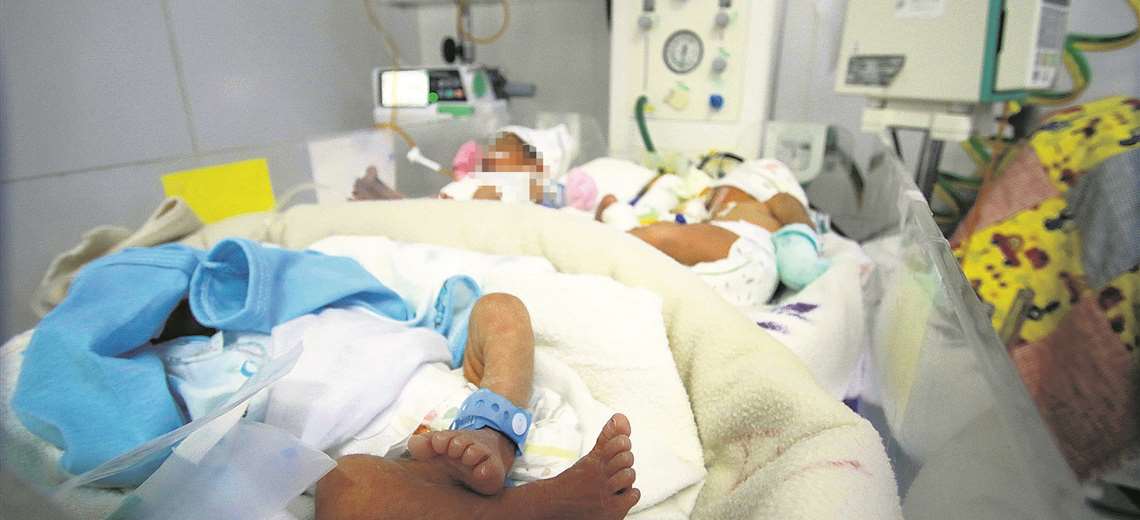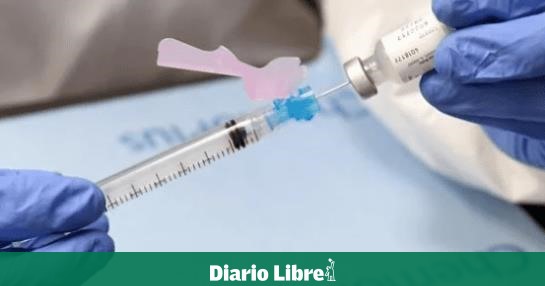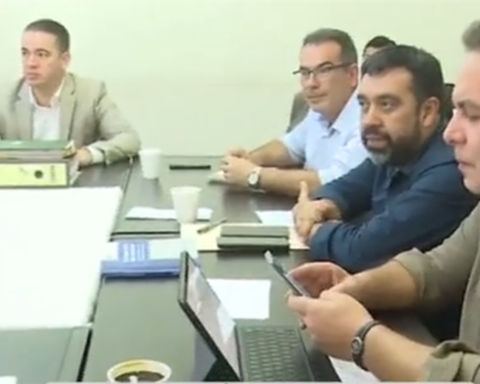Three newborns sharing a cradle, other cots with two and three neonates under intubation, that is the picture that you live in the newborn room of the Perc maternityand Boland that suffers from the saturation of its intensive care spaces.
Efforts to refer patients to the public system have not been enough to alleviate overcrowding because the other hospitals lack spaces with incubators.
The nursery has capacity for six babies, but before the lack of space accommodate up to 18 neonates. It is about of a transit area, where newborns must receive first aid before being transferred to the neonatal wards.
They should only be there for up to two hours, but most remains for a long time and even several know thatThey stay until they are discharged, since the 54 neonatal beds are almost always occupied.
On Tuesday, in addition to the babies who shared cradles, there were three intubated and one on oxygen. “Being a transit room, these babiesés should not be there, but there is no where refer them,” said the maternity director, Mario Herbas.
He added that the situation has not changed since last week when the staff of the maternity hospital asked for the help of the authorities due to the risk of babies contracting infections due to overcrowding. “We are still in a critical situation because practically nothing has been solved, we are as before,” added Herbas.
He pointed out that, in the search for spaces, last Monday personally accompanied the reference team and counter-reference to visit some second-level hospitals, where they found that most of these centers do not have neonatal units for critical patients, which is what they are needing.
“In the El Bajío hospital they got us two spaces, but for cradles and not for neonatal therapy, while the Villa Primero de Mayo hospital had a space for therapy,” said Herbas.
In the tour it was verified that even in the second level there are saturation problems. At Villa Primero de Mayo hospitalof the 12 incubators that it counts, eight were occupied and three were in poor condition, so there was only one free, which was occupied by a baby derived from the maternity.
The verification was made after the Municipal Government offered spaces in the neonatology areas of the second level hospitals, which are under its tutelage, such as Villa Primero de Mayo, Francés and Plan 3,000.
Herbas explained that, of the 54 beds in the maternity hospital’s neonatology service, 17 are intensive care, 18 of intermediate care and the rest of minimum careThe neonatal and pre-discharge hospitals, but insists that these spaces are always occupied because the maternity hospital is the only tertiary care hospital where women with high-risk pregnancies are treated, derived from the first and second level.
Between 15 and 20 births are attended daily, most by cesarean section, and many of the newborns require incubators. “Now we have three patients to operate who they probably need incubators, what do we do with these children if there is no neonatal therapy in other hospitals?, questioned the director.
He points out that what could alleviate the situation is the renewal of the agreement by the Ministry of Health with private clinics for the referral of patients covered by the Unified Health System (SUS), the same one that expired at the end of the of 2021, which came to complicate the saturation problem. “We need to reactivate the agreements with these clinics because there are no spaces in the public system,” he reiterates.
He added that, due to the emergency that the motherhood is going through, an attempt was made to set up five incubators that the maternity hospital has ready to work, but they were seen idisabled by the lack of nursing staff.
There are between 16 and 18 nursing graduates who urgently need to enable these spaces and guarantee the staff for the different shifts.
On the situation of the maternity, the municipal secretary of Health, Roberto Vargas, pointed out that there are 54 neonatal beds in second-level hospitals, although he did not specify how many of these correspond to intensive care.
He stated that he coordinates with the maternity director on the spaces they require. On the other hand, he announced that this week the Pampa de la Isla hospital will have Pediatric and Neonatology care, with 12 and eight beds, respectively, since 64 officials have been hired for these and other service areas.
Need
The Secretary of Human Development and Health of the Government, Fernando Pacheco, urged the national government to sign the SUS agreement with private clinics so that they provide care to newborns and the maternity situation can be alleviated.
“There is an agreement that helped us support this need for the department and, to date, they have not been signed. all this letez we have to make it public, because we are not going to be ‘sucking’ (a) responsibility that it does not correspond to us as Government; but it is our responsibility to let the population know where the problem is,” Pacheco declared.
According to official data, Santa Cruz needs 80 spaces for neonatal intensive care, since the recommendation is one for every 1,000 births. In the department they are born aroundabout 80,000 creatures a year. The maternity has 17 spaces, the Mario Ortiz hospital has eight and the Japones, four. In other words, there are 34 spaces for neonatal intensive care, which does not cover even half of what is required, according to data from the Government.
This week Pacheco went to the seat of government to make the proper representation before the national government, sincewho left a letter to President Luis Arce Catacora so that he can meet the requirements of maternity Percy Boland and make care viable at the Óscar Urenda hospital.
The authorities await a statement from the national government on these issues.








